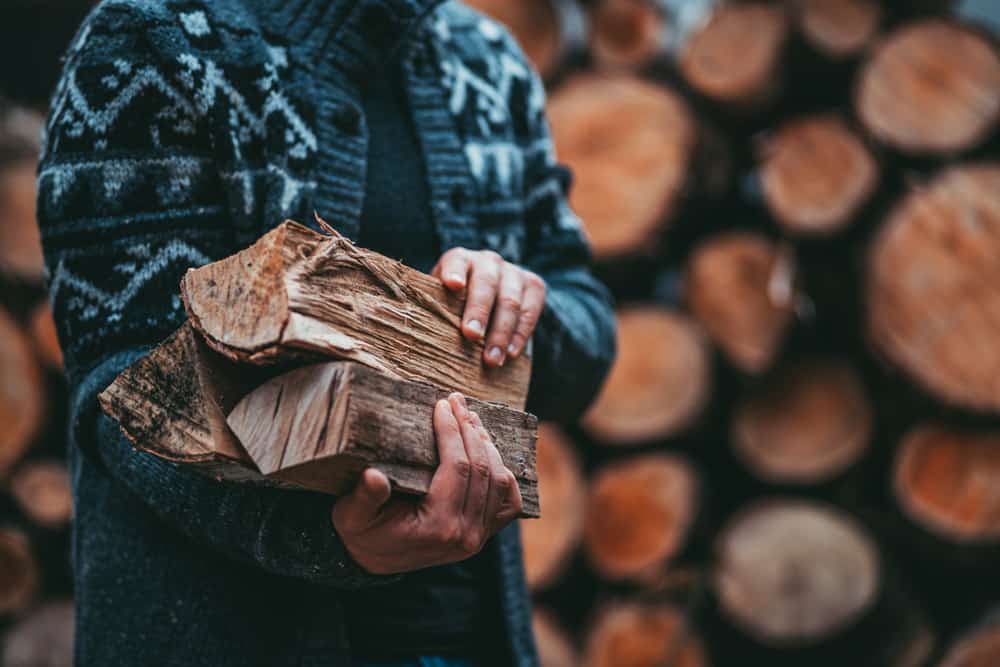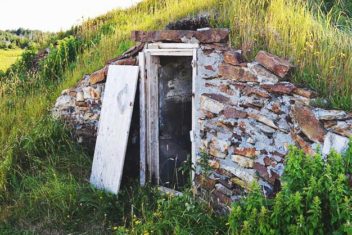A roaring fire is undeniably cozy. There is something that appeals to our most elemental selves in those dancing flames. But firewood can be incredibly expensive. A few pieces of chopped, seasoned wood cost a lot. That’s why clever folks find free firewood.
Finding free firewood is entirely possible, but it takes a little extra work. That might mean doing some extensive online hunting, some foraging, or a visit to a local sawmill. But with the extra effort comes the reward of a fire that you can enjoy without the visions of dollar signs burning up as the flame burns down.
Option 1: Gather Wood from Your Own Property
This is the quickest way to get firewood for any purpose you may have around the homestead. Chances are that if you have a patch of land, there are at least a few trees you can take down to burn.
Choose trees that are far enough away from any structures, vehicles, and power lines that they won’t crush anything vital when they fall. If you feel comfortable using a chainsaw, then you can cut these trees down yourself. Just make sure to service the saw ahead of time and wear appropriate safety gear while you work.
If you aren’t comfortable cutting a tree down on your own, you can hire an arborist to do it for you. Their services can be pricey, however, so ask them for an estimate before you agree to hire them. You’re aiming for free firewood here. Shelling out a few hundred dollars for arborist services is far from free.
If you know any arborists, you might be able to come up with an exchange of services rather than a monetary payout.
Whether you’re doing it yourself or hiring a professional, aim for old trees that are either dead or near dying, as they’ll take the least time to cure. Trying to burn green, “wet” wood is incredibly trying. It’s more likely to exhaust you than keep you warm. Ideally, you should allow firewood to cure (dry) for at least a year before you burn it.
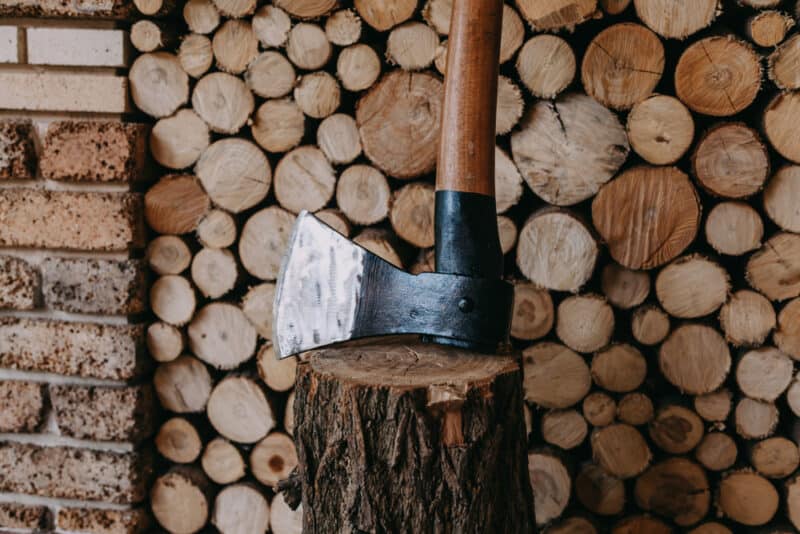
That said, you can toss some partially cured large logs into a fire just before bed to slow-burn over the course of the night. Just know they’ll smoke quite a bit.
After you buck it, you can chop it into whatever size(s) you need. This varies depending on whether you’re burning it in a fireplace or woodstove. While you’re at it, make sure to cut plenty of kindling as well—you’ll need it.
Option 2: Visit a Local Sawmill
Check out online networks to find out where there’s a sawmill close to you. Then call or email the owner to find out if there are any off-cuts you can take off their hands, free of charge. These are normally rough slabs that are odd sizes that they can’t use to make quality products like furniture or building materials.
These pieces just take up space and would just end up as wood chips. Many sawmills are more than happy to have them taken off their hands.
You’ll need a truck or a trailer attached to your car to haul this stuff home with you, so plan that ahead of time. Be sure to pack a chainsaw and work gloves in case you need to cut larger pieces down to size for the sake of easier transport.
This is one of the best options out there as most of the work has already been done for you. You just need to put in a bit of manual labor to get it home, cut to size, and stacked.
Option 3: Use the “Chip Drop” Website
Whether you live in a city or somewhere rural (or semi-rural), you may benefit from using the Chip Drop website as a resource. This site allows arborists to find places to drop off logs and boughs close to where they’ll be working. It also lets people put the word out that they need wood.
It’s basically like a Freecycle site, only for wood.
When arborists take down a damaged or dead, they need to dispose of the wood somewhere. Many homeowners are without hearths or burner stoves. Governments outlaw bonfires in most urban and suburban areas. Eventually, someone has to remove those trees.
If someone nearby has a fireplace and would be delighted for some free firewood, said arborists can chuck the wood onto their lawn and let them deal with it.
You’ll still need to buck and chop the wood yourself. Still, getting free wood delivered to your property at no charge is pretty freaking awesome.
Option #4: Look at Cragislist (or Similar Sites) for Offers of Free Wood
You can find free wood on sites like Craigslist and Kijiji. Let’s say a person buys several cords of wood for the winter but then has to move to another state unexpectedly. They might try to sell the wood, but if there aren’t any takers they might try to offload them for free instead.
The same goes for construction sites and film sets. Organizations like Habitat for Humanity try to salvage what they can after sets and temporary builds have been torn down. However, they can’t always reuse everything. With permission, you may be able to collect some of the wood to burn at home.
Option #5: Get a Permit to Gather Firewood from Public Lands
Depending on where you live, you might be able to buy a permit to collect wood from government-owned land.
These can either be free, or range in price from about $5 to $30, depending on where you live, so this option isn’t 100% free. That said, considering that a cord of firewood costs $200–$500 depending on the type of wood, a permit to gather your own is significantly cheaper.
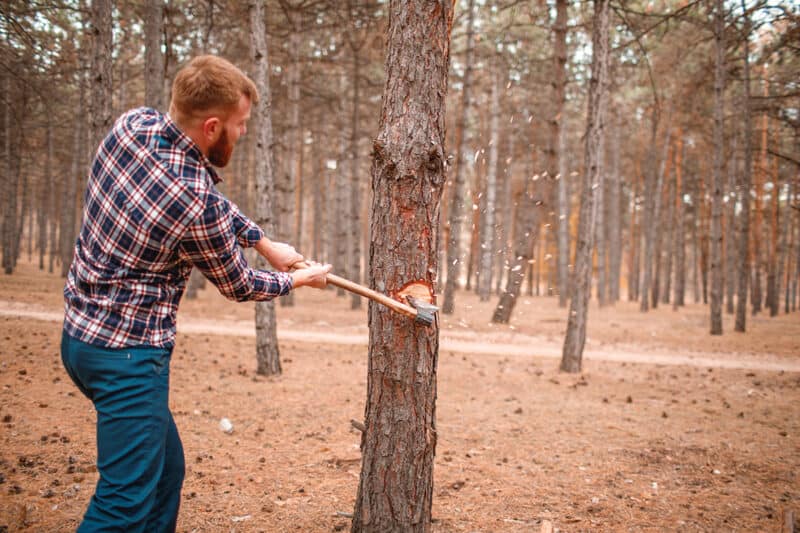
Some areas offer free permits that allow you to cut a certain amount of dead or downed wood from particular areas. Local forest authorities will be able to direct you to the places where you can gather freely.
You might also be able to purchase personal use permits for specific areas. These are the ones that allow you to cut dead downed trees *or* dead standing ones as long as they meet certain criteria. If you live next to a particularly dense forest, you’ll actually be contributing to its overall health by removing dead and dying trees.
Just make sure to look into permits before you go traipsing into your local national park with a chainsaw and ax in hand. Governments consider cutting down trees on public land theft in many places and can come with a hefty fine.
Option #6: Woodland Construction Zones
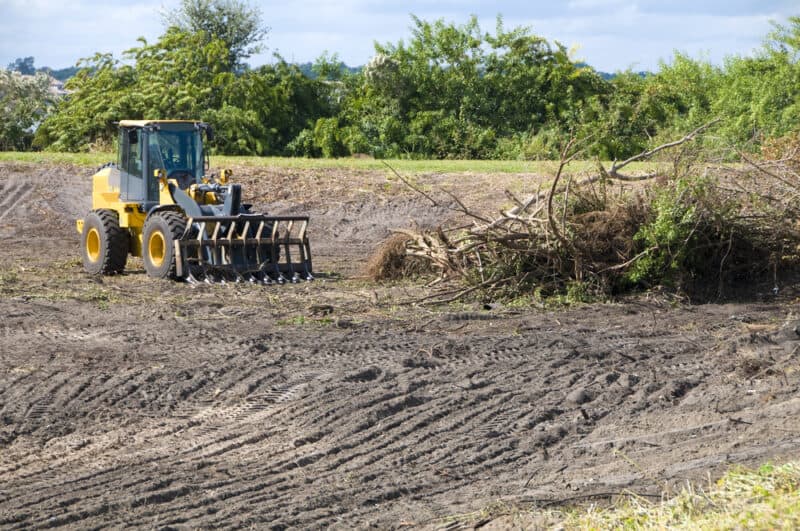
If you live in a rural area, check out areas where construction crews are clearing woodland. They’re usually felling trees to build homes and businesses. If a builder is transforming woodland into homes with lawns, hundreds of trees may end up just lying around.
Talk to the people in charge of clearing these areas to find out if they’d like help removing the fallen logs. You may have to buck them with a saw yourself before hauling them out of there. Still, you should be able to get your hands on a significant amount of free wood.
Option #7: Salvage from Roadside Log Drops
Logs often fall off transport trucks, potentially damaging nearby cars. Good samaritans may roll them onto the soft shoulder or onto nearby grass to get them out of the way. But the logs will just lie there until they rot.
If you just happen to be driving by with a truck and have the means to haul these logs back home with you, booyah.
Option #8: Gather from Hydro-Line Clearing
Hydro companies often have to remove boughs—and whole trees—that may be threatening public power lines.
Call them up to find out if there will be any trees available for salvage, and whether you can have permission to gather them. Visit the site once the workers are done and haul that timber to your home.
Then you can chop it all up and use it to your heart’s content.
Option #9: Collect Wood Pallets
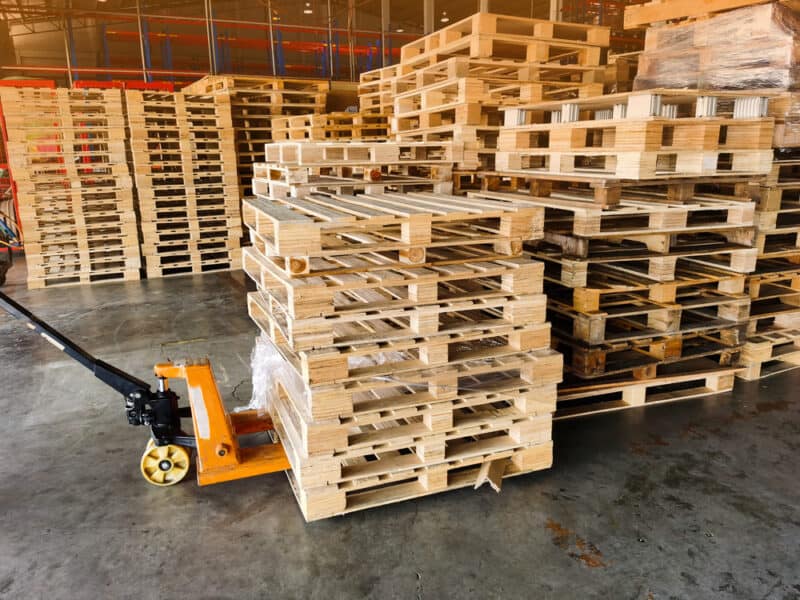
Pallets are readily available from many areas, including hardware stores, garden centers, and online listings. Most aren’t returned after use and businesses are eager to be rid of them.
This option is ideal if you’re looking for free firewood to use in bonfires, campfires, and other outdoor burns. Most pallets are made with low-quality wood. It’s often been treated with a slew of chemicals you don’t want roiling around inside your home. Methyl bromide is great for killing wood-gnawing pests, but it wreaks havoc on your health if you inhale it.
If you burn these outdoors, dispose of the ashes safely and don’t use them in your garden. Additionally, you’ll have to use a strong magnet to pull any nails or staples out of the ash so they don’t accidentally get strewn around your property.
Be sure to store your wood properly. Cover it with tarps or stick it in the woodshed, and you’ll be toasty warm all winter long.
